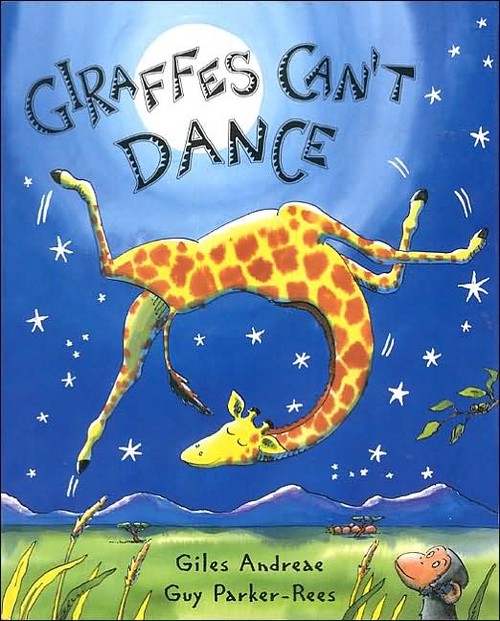Even if you’re not familiar with the name of poet, author and illustrator Giles Andreae, you’ll certainly recognise his work. He is the playful philosopher Edward Monkton (creator of Pig of Happiness and the Madness Hamster) and the inventor of cheeky Purple Ronnie. He has also written many children’s bestsellers including Rumble in the Jungle, Commotion in the Ocean and Giraffes Can’t Dance.

Are you an illustrator who writes, or a writer who draws?
Very much the latter. The words always come first and I find it easier to communicate sentiment from one person to another that way. For me, personally, words are more emotionally arresting than pictures – it’s a poetic kind of sensibility.
Can you sum up your style?
Playful – and I think that’s central to being an artist. You make suggestions, think about things, be amusing and inquisitive. I combine humour and philosophy in Edward Monkton and together they’re greater than the sum of their parts.
Who do you admire?
I love Michael Leunig, the Australian poet and cartoonist, and David Shrigley, for fairly obvious reasons – we both work in a naïve style and both address issues with our work.
What issues do you address?
With Edward Monkton, it’s love, life, why are we here, death, happiness, friendship. All the big issues! In my children’s writing it’s love and happiness. And in Purple Ronnie, it’s all sorts. There are two sides to Purple Ronnie: the naughty, cheeky schoolboy and the sentimental side. It’s a curious combination and I think that’s what people like about him.
Did you begin your career with Purple Ronnie?
Yes, Purple Ronnie started as a comedy revue act and I thought it would work on cards, so I got together with a friend and printed some. At the time, it was something new and iconoclastic, and the first time that alternative comedy had featured on greetings cards. No proper publisher would take them on, so we sold them locally as a minimum order of one postcard for 10p, and the shops had nothing lose.
What was your lucky break?
Finding a publisher for Purple Ronnie. I did that classic thing of sending it to every publisher and they all turned it down, which is why I printed cards with a friend. I found a publisher in the end only because my flatmate’s girlfriend’s parents lived next door but one to a greetings card publisher.
How did you deal with those early rejections?
I had nothing to lose really, so I just carried on. It didn’t matter to me as it wasn’t my day job. I was a student working part-time in an advertising agency with no plans to be an illustrator. Then I was diagnosed with cancer during my finals and had to take time off. I started a different job and it was only when I realised the royalties paid more than my salary that I thought I should concentrate on illustration.
What advice would you give to someone starting out?
- You should create your work from your heart rather than for the market. If it’s not from the heart people can feel that. But you still have to be aware of why people might want your work, and how they will engage with it.
- It’s quite obvious but people still get it wrong: you should only present your very best work. Even if you only have three pieces out of 50 that you think are brilliant, show those. You only ever have one shot with your submission.
- It’s important to realise that publishers are desperate to find good material, it’s in their interests. If you’re rejected five times, there’s probably a reason for it, so listen to what they have to say.
- Some people create something and never submit it, but I think that’s unforgivable. Don’t be frightened to submit your work: even if no one takes it up, it’s better to know that’s the case.
Do you have an agent?
Yes, several, it’s tricky to know where to start! I have a children’s literary agent, and I didn’t have an agent for Edward Monkton for seven years, but now I do… an agent is there to manage not only relationships, but also time. I hate it when the business side takes over the creative side of things.
Who is Edward Monkton?
He is a playful philosopher, a distinct character, but still very much a part of me. Sometimes people get upset when they discover Edward Monkton isn’t real, but he is real. I have spectacles and a suit I wear for interviews as him: the spectacles are replica 1950s from a specialist antique shop in New York and the suit is brown corduroy.
Most bizarre moment?
For Edward Monkton we did a promotion where I had to sign a 56lb sack of potatoes, and by that I mean I had to sign every single one. Lots of them ended up on eBay and as the days went by new auctions appeared where the potatoes were sprouting.
What would you change about your chosen career?
There are more sales in fewer and fewer hands. I wish there were more independent retailers, to encourage experimental work. If shops sell to the masses, they’ll only stick to mass market products. All independent booksellers – particularly children’s ones – are worth their weight in gold. They promote real talent.
What’s next for you?
I am creating an animation of the Pig of Happiness, which will be on the web – on my website and on YouTube – as free fun, happiness. Love and happiness are the two themes I constantly return to and they’re crucial at the moment as the world is often presented as a frightening place.
Comments